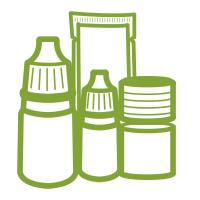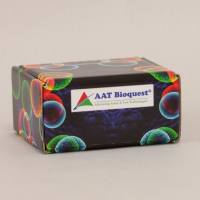CNV Analysis Using TaqMan Copy Number Assays
互联网
- Abstract
- Table of Contents
- Materials
- Figures
- Literature Cited
Abstract
Copy number variations are important polymorphisms that can influence the expression of genes within and close to the rearranged region. This allows transcription levels to be higher or lower than those that can be achieved by control of transcription of a single copy. Recently, copy number variations have been associated with genetic diseases such as cancer, immune diseases, and neurological disorders. TaqMan copy number assays are designed to detect and measure copy number variation in the human genome using real?time polymerase chain reaction and unquenching of fluorescent probes for the target sequence. Curr. Protoc. Hum. Genet. 67:2.13.1?2.13.10 © 2010 by John Wiley & Sons, Inc.
Keywords: CNV; TaqMan; copy number assays
Table of Contents
- Introduction
- Basic Protocol 1: Quantifying Copy Numbers in Genomic DNA Using the TaqMan Copy Number Assay
- Basic Protocol 2: Statistical Analysis of COPYCALLER Data
- Support Protocol 1: Preparation and Normalization of the Genomic DNA Samples
- Support Protocol 2: Installing the CopyCaller Software
- Commentary
- Literature Cited
- Figures
- Tables
Materials
Basic Protocol 1: Quantifying Copy Numbers in Genomic DNA Using the TaqMan Copy Number Assay
Materials
Basic Protocol 2: Statistical Analysis of COPYCALLER Data
Materials
|
Figures
-

Figure 2.13.1 Workflow for carrying out CNV analysis with TaqMan copy number assays. View Image -

Figure 2.13.2 Example of assay results from CopyCaller. View Image -

Figure 2.13.3 Analysis of CNV files. View Image -

Figure 2.13.4 Cts for un‐normalized and normalized DNA. The x axis represents the number of cycles and the y axis represents an arbitrary fluorescence unit. View Image -

Figure 2.13.5 Steps in a duplex PCR reaction containing copy number target and reference assays. Both are 5′ nuclease assays. Reproduced from TaqMan Copy Number Assays Protocol () with permission from Applied Biosystems. View Image
Videos
Literature Cited
| Literature Cited | |
| Hastings, P.J., Lupski, J.R., Rosenberg, S.M., and Ira, G. 2009. Mechanisms of change in gene copy number. Nat. Rev. Genet. 10:551‐564. | |
| Henrichsen, C.N., Chaignat, E., and Reymond, A. 2009. Copy number variants, diseases and gene expression. Hum. Mol. Genet. 18:R1‐R8. | |
| Stankiewicz, P. and Lupski, J.R. 2010. Structural variation in the human genome and its role in disease. Annu. Rev. Med. 61:437‐455. | |
| TaqMan Copy Number Assays Protocol. 2009. Applied Biosystems, Foster City, California. | |
| Wang, K., Li, M., Hadley, D., Liu, R., Glessner, J., Grant, S.F., Hakonarson, H., and Bucan, M. 2007. PennCNV: An integrated hidden Markov model designed for high‐resolution copy number variation detection in whole‐genome SNP genotyping data. Genome Res. 17:1665‐1674. | |
| Xie, C. and Tammi, M.T. 2009. CNV‐seq, a new method to detect copy number variation using high‐throughput sequencing. BMC Bioinformatics 10:80. |







